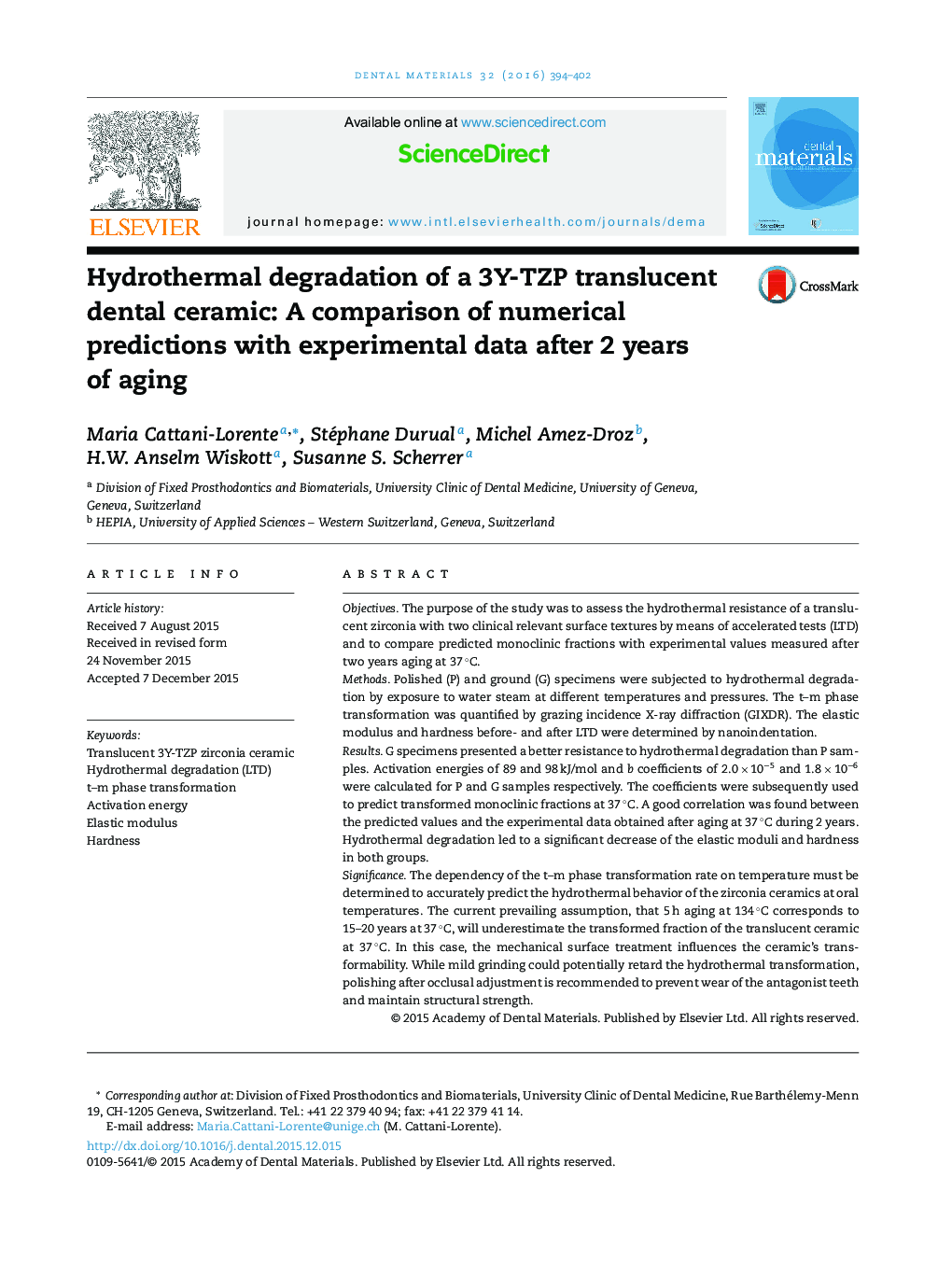| کد مقاله | کد نشریه | سال انتشار | مقاله انگلیسی | نسخه تمام متن |
|---|---|---|---|---|
| 1420517 | 986368 | 2016 | 9 صفحه PDF | دانلود رایگان |
• Grinding increases the ceramic's resistance towards ageing at the subsurface.
• The activation energies compares well with previous reported values.
• After aging at 37 °C, predicted and experimental values are in accordance.
• The hardness and elastic modulus of the ceramic were significantly reduced by aging.
ObjectivesThe purpose of the study was to assess the hydrothermal resistance of a translucent zirconia with two clinical relevant surface textures by means of accelerated tests (LTD) and to compare predicted monoclinic fractions with experimental values measured after two years aging at 37 °C.MethodsPolished (P) and ground (G) specimens were subjected to hydrothermal degradation by exposure to water steam at different temperatures and pressures. The t–m phase transformation was quantified by grazing incidence X-ray diffraction (GIXDR). The elastic modulus and hardness before- and after LTD were determined by nanoindentation.ResultsG specimens presented a better resistance to hydrothermal degradation than P samples. Activation energies of 89 and 98 kJ/mol and b coefficients of 2.0 × 10−5 and 1.8 × 10−6 were calculated for P and G samples respectively. The coefficients were subsequently used to predict transformed monoclinic fractions at 37 °C. A good correlation was found between the predicted values and the experimental data obtained after aging at 37 °C during 2 years. Hydrothermal degradation led to a significant decrease of the elastic moduli and hardness in both groups.SignificanceThe dependency of the t–m phase transformation rate on temperature must be determined to accurately predict the hydrothermal behavior of the zirconia ceramics at oral temperatures. The current prevailing assumption, that 5 h aging at 134 °C corresponds to 15–20 years at 37 °C, will underestimate the transformed fraction of the translucent ceramic at 37 °C. In this case, the mechanical surface treatment influences the ceramic's transformability. While mild grinding could potentially retard the hydrothermal transformation, polishing after occlusal adjustment is recommended to prevent wear of the antagonist teeth and maintain structural strength.
Journal: Dental Materials - Volume 32, Issue 3, March 2016, Pages 394–402
